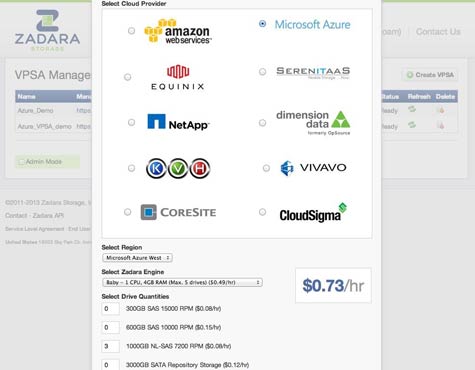Data storage used to be relatively simple, in the sense that it was generally all in one location. But with the advent of cloud computing, data is now stored both inside and out of the enterprise.
Looking to help IT organizations get a better handle on all the storage, Zadara Storage has created a storage-as-a-service offering based on the open source OpenStack cloud management platform that makes it easier to manage storage systems deployed both on premise and in the cloud.
Noam Shender, vice president of business development for Zadara Storage, says the Virtual Private Storage Array (VPSA) can be deployed on premise, in a managed hosting environment and in the cloud. Regardless of where the VPSA is deployed, Shender says a unified console allows IT organizations to manage petabytes of flash and magnetic storage systems as a single service via RESTful application programming interfaces (APIs) that Zadara exposes.
Most recently, Zadara Storage added Microsoft Azure to its list of cloud computing environments where VPSAs can be deployed, alongside Amazon Web Services (AWS), CloudSigma, Dimension Data and others. Shender says that VPSAs can either be deployed inside a cloud computing environment or in an adjacent site that provides file and block-level storage resources, to be located as close as possible to the servers that are providing the compute engine enabled by that cloud.
Shender says the most compelling aspect of the Zadara offering is the fact that IT organizations can now manage distributed storage systems deployed in and out of the cloud using the same management console, using a subscription-based pricing model. Rather than relying on gateways to provide that capability, Shender says Zadara storage management software was developed from the ground up to allow organizations to, for example, manage snapshots and replicate data between on-premise and cloud storage environments.
Managing storage in isolation in the cloud doesn’t represent much of an advance. In fact, it generally winds up making storage management more complicated even if the actual cost of the storage being provided is less. The end goal now should be to find ways to reduce all that complexity in a way that allows organizations to not only have their cloud storage cake, but more easily eat it, too.




